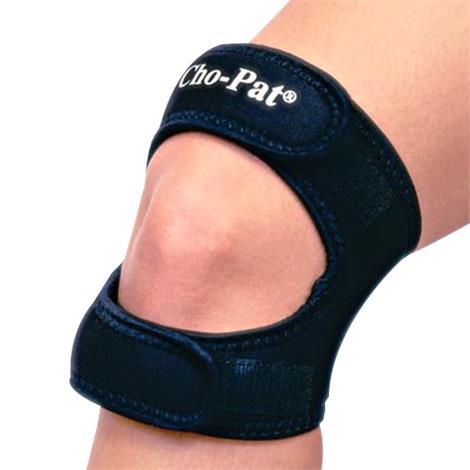Save 25% On Your First Autoship Order
Save 25% On Your First Autoship Order

A common and potentially serious symptom among athletes of basketball, volleyball, long jump and track-and-field events, Jumper’s Knee affects sports persons involved in a lot of jumping and landing exercises. Increased competition coupled with intensive training programs have led to an increase in incidence of jumper’s knee.

Repeated activities causing excessive stress on the patella tendon
Tiny tears within the patella tendon because of knee overuse
Decreased flexibility in the thigh and hamstrings
Tightened leg muscles
Sporadic resting periods between workouts

Pain: Sharb throbbing pain beneath the kneecap during activity
Swelling: Mild swelling of the knee joint, other patellar injuries, coupled with reduced range of motion
Redness or Bruising: In extreme cases discoloration of the knee joint may be detected immediately after an acute injury

Immediate relief from pain and swelling is required and this often comes in the form of the R.I.C.E. method - Rest, Ice, Compression and Elevation -one of the most recommended first aid therapeutic treatments.
Rest and protect the injury and cease any activity that may aggravate the condition. This is also important to minimize any swelling and further damage. Rest may also involve the use of supports like crutches, knee straps such as Cho-Pat® Dual Action Knee Strap, braces and kinesiology tapes. Excessive stress during recovery is not recommended as you might end up causing additional damage in the long run.
Ice therapy, also known as cryotherapy, stimulates vasoconstriction of the blood vessel in the area thus helping bring down swelling and inflammation. Use an ice pack wrapped in a damp towel on the injured area for 15 to 20 minutes. Repeat this procedure every two hours in the first two days. Cautious use of the ice pack treatment should be observed by those sensitive to cold or with circulatory problems.
Compress the injured area with Cho-Pat® Dynamic Knee Compression Sleeve. Compression helps immobilize and protect the joint thus minimizing swelling. Remove compression bandage at night.
Elevation of the injured area above the level of the heart helps reduce swelling by allowing extra fluid to drain. One can elevate the injured area on a pillow while sitting or applying the ice therapy.
Once the recovery process starts, exercise plays an important role in rehabilitation. Stretching and massage help in long-term healing and strengthening of the muscles and knee. Aids such as StretchRite® target the gluteus medius, piriformis, hamstrings and quads that help ensure flexibility along the lower body. OPTP Travel Stick helps in massaging and the myofacial release of the knee can often relieve muscle tension and create tissue mobility contributing significantly towards increasing flexibility.
Jumper’s knee is a common injury and proper rehabilitation techniques and advice from experienced medical professionals can help you get through this painful phase easily.
Disclaimer: All content found on our website, including images, videos, infographics and text were created solely for informational purposes. Our content should never be used for the purpose of diagnosis or treatment of any medical conditions. Content shared on our websites is not meant to be used as a substitute for advice from a certified medical professional. Reliance on the information provided on our website as a basis for patient treatment is solely at your own risk. We urge all our customers to always consult a physician or a certified medical professional before trying or using a new medical product.

Taikhum Sadiq has been a Health Products For You contributor since 2016.
He is an archaeology student and is passionate about learning about the past and how it impacts our future. He believes ...
How To Increase Iron Levels Quickly
It’s a question that must have puzzled you like many others. Iron is essential in hemoglobin production and its inadequate levels can negatively impact your health. Dive into this informative article to explore top iron-rich foods that can help you fight iron deficiency.
10 Best Coccyx Cushions for Tailbone Pain
If you're like most people, you spend about 8 to 10 hours sitting every day. However unhealthy, it is part of life for many, and can cause tailbone pain. Coccyx cushions can help alleviate this pain. Click to read more and find the perfect coccyx cushion for your tailbone pain.
5+ Best Adult Diapers for Fecal Incontinence
Dealing with fecal incontinence can be challenging, but you're not alone. Read this article and navigate through discreet and effective solutions that help you manage fecal incontinence and let you live life on your terms with confidence and comfort.
Top 5 Best Reviewed Nebulizers of 2024
Need an effective and affordable nebulizer? Look no further, in this article we offer 5 of our best reviewed nebulizers that are loved by our customers. Click to read more and find the perfect nebulizer for all your respiratory needs.
10 Best Penis Pumps For Erectile Dysfunction
For anyone dealing with erectile dysfunction, penis pumps serve as a great way to manage it. But with so many products available, determining the best one for your needs can be challenging. To assist you in refining your choices and making an informed decision, here are our top 10 options, recognized for their effectiveness and safety.